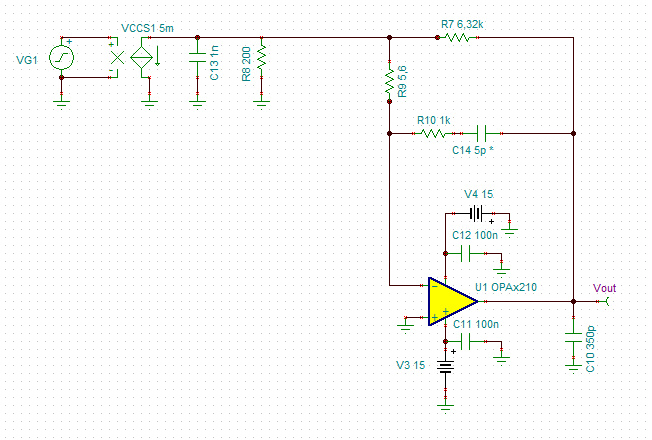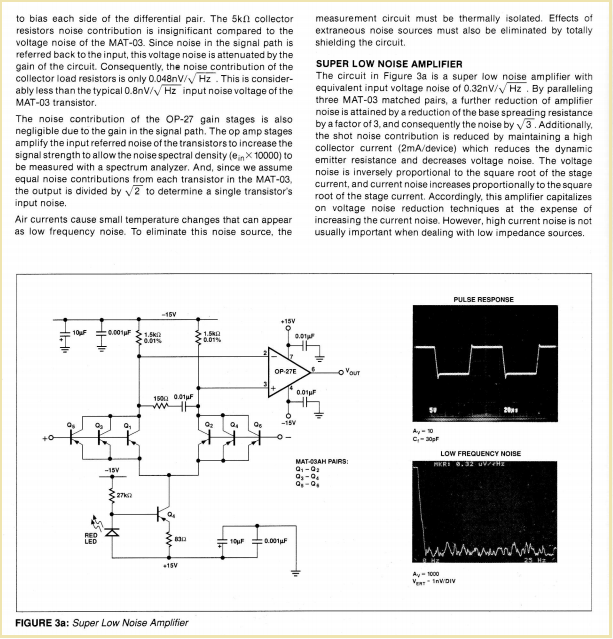Other Parts Discussed in Thread: OPA657, OPA828, OPA192, OPA4192, , OPA211
Hi,
For achieving better voltage noise, one can connect amplifiers in parallel if the input noise current times the source resistance is several times lower than the input voltage noise.
With amplifiers intended for voltage gain this is not a big deal, as one can just build two or more identical amplifiers, connect their inputs directly and connect their outputs to the common output via identical resistors, which do the job of averaging the two or more amplifier outputs and limiting the current flowing between the amplifier outputs caused by different offset voltages.
Because the amplifiers only share one input terminal, their second input terminals can settle to different voltages, so the output offset between the amplifiers is usually just the input offset voltage times the voltage gain.
Now with a transimpedance amplifier configuration all the amplifiers would share both input terminals, which would result in bot outputs going to the opposite rails unless the input offset voltages were exactly the same.
Is there a good way to realize paralleling of amplifiers in the transimpedance configuration? I thought about zeroing the output difference with a slow servo loop offsetting the non inverting input of one of the amplifiers, but as my signal frequencies can be very low, the loop would have to be a very very slow one.
Thanks for any input.
Regards,
Gerd





